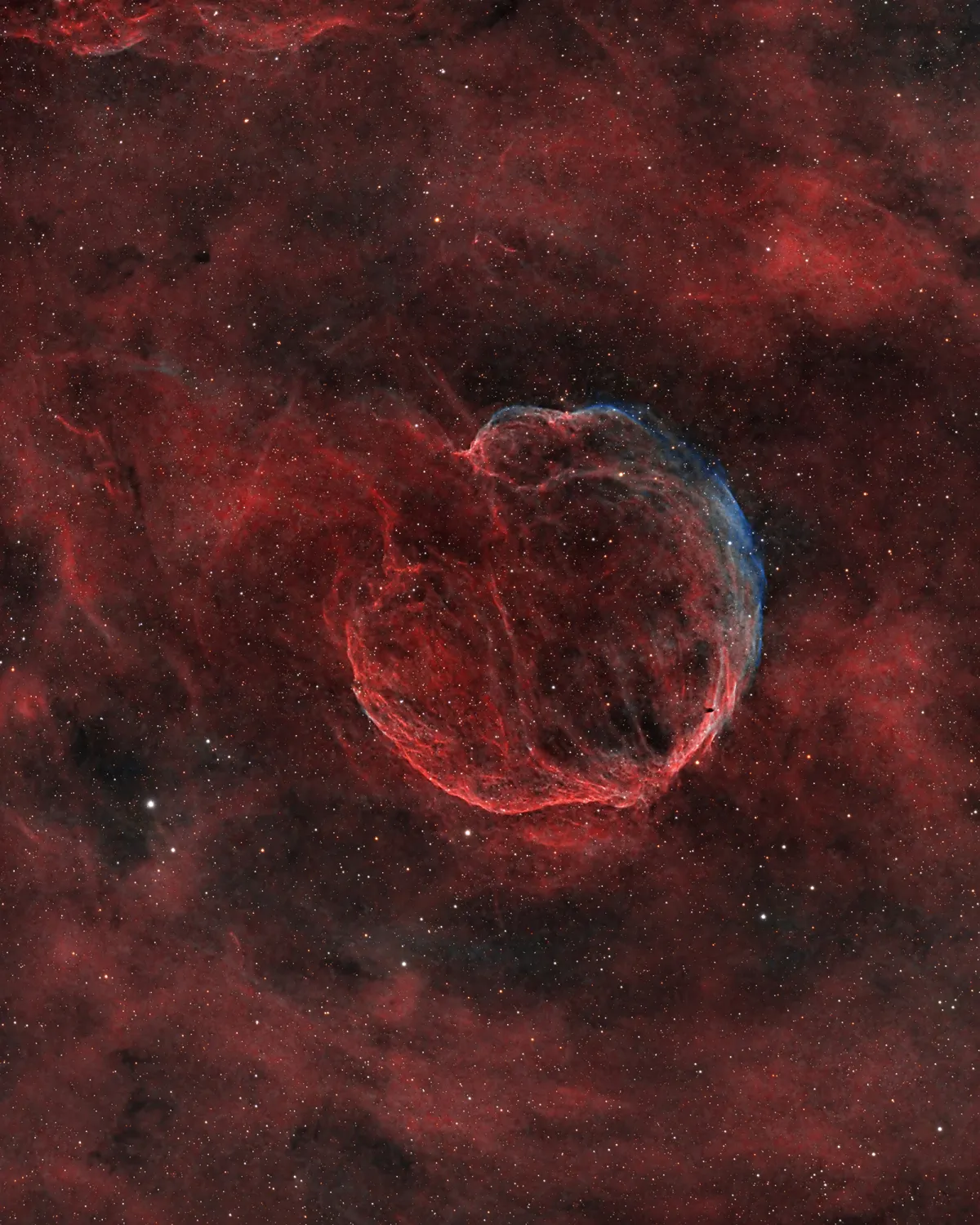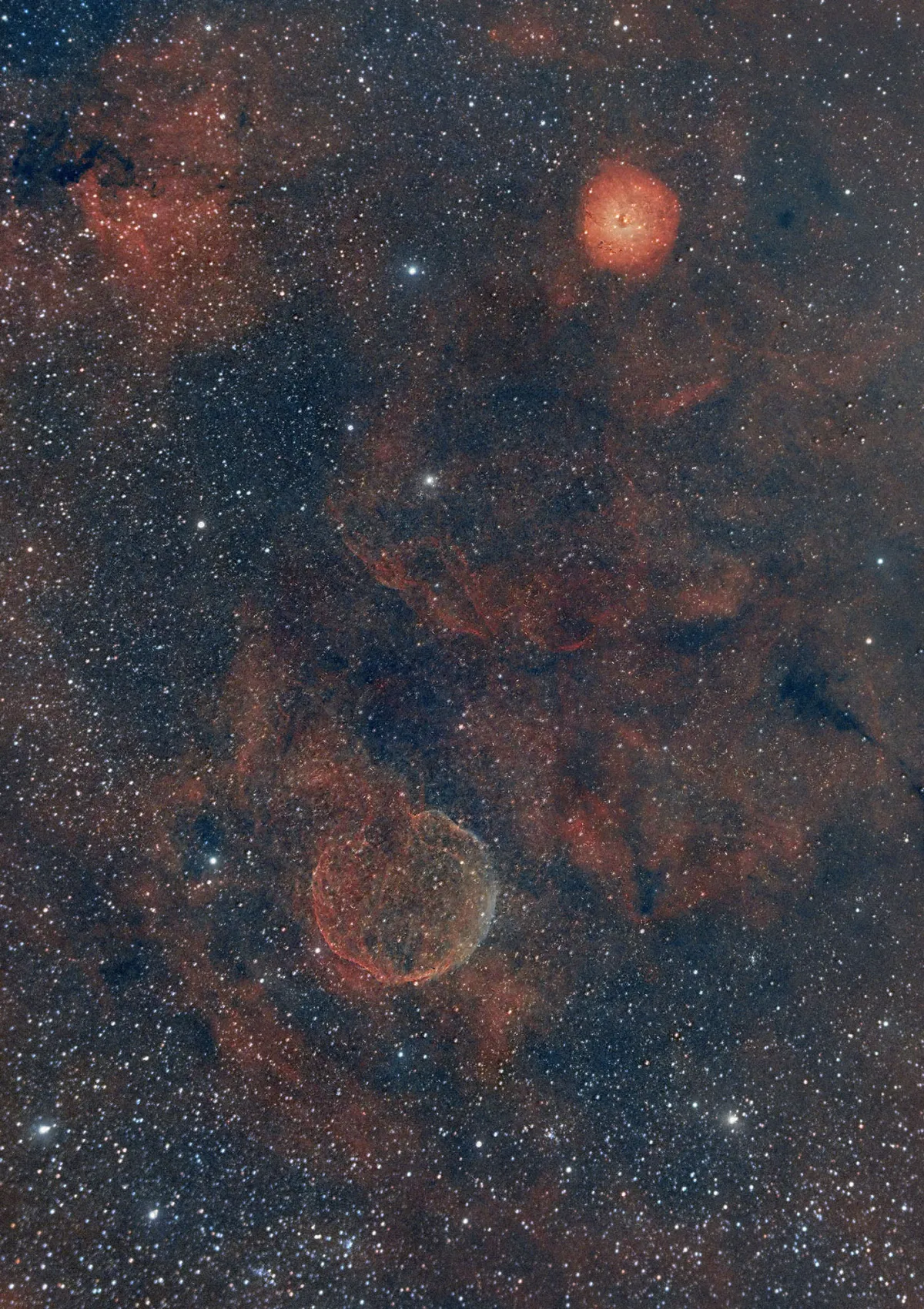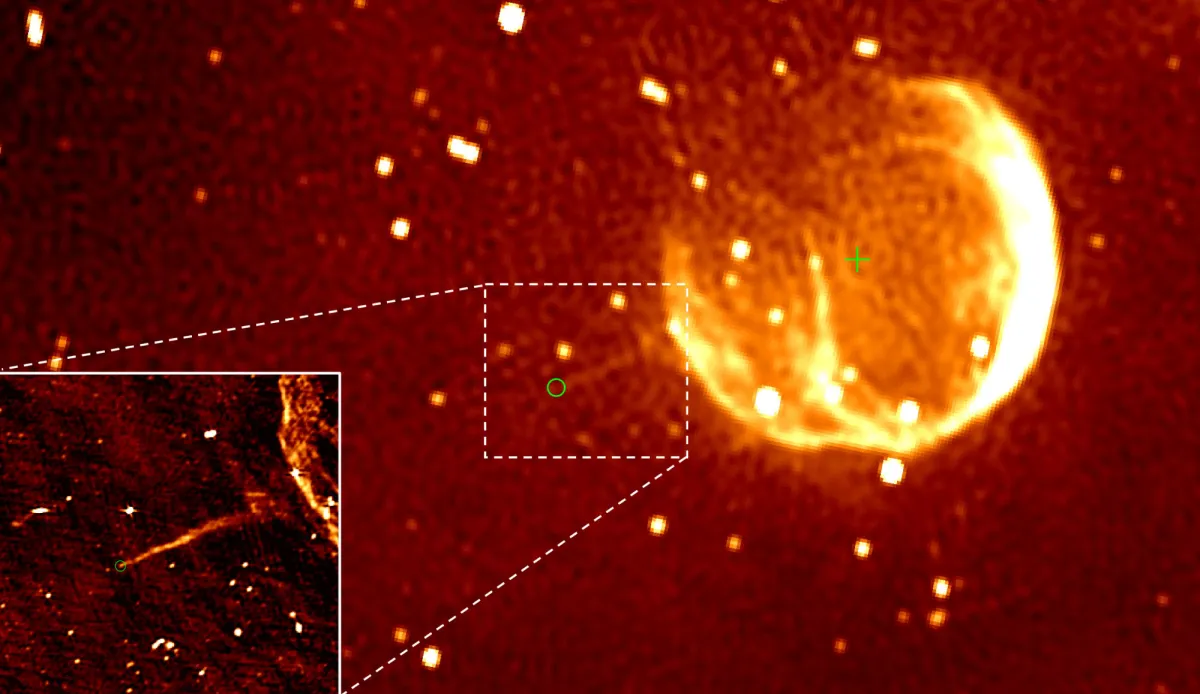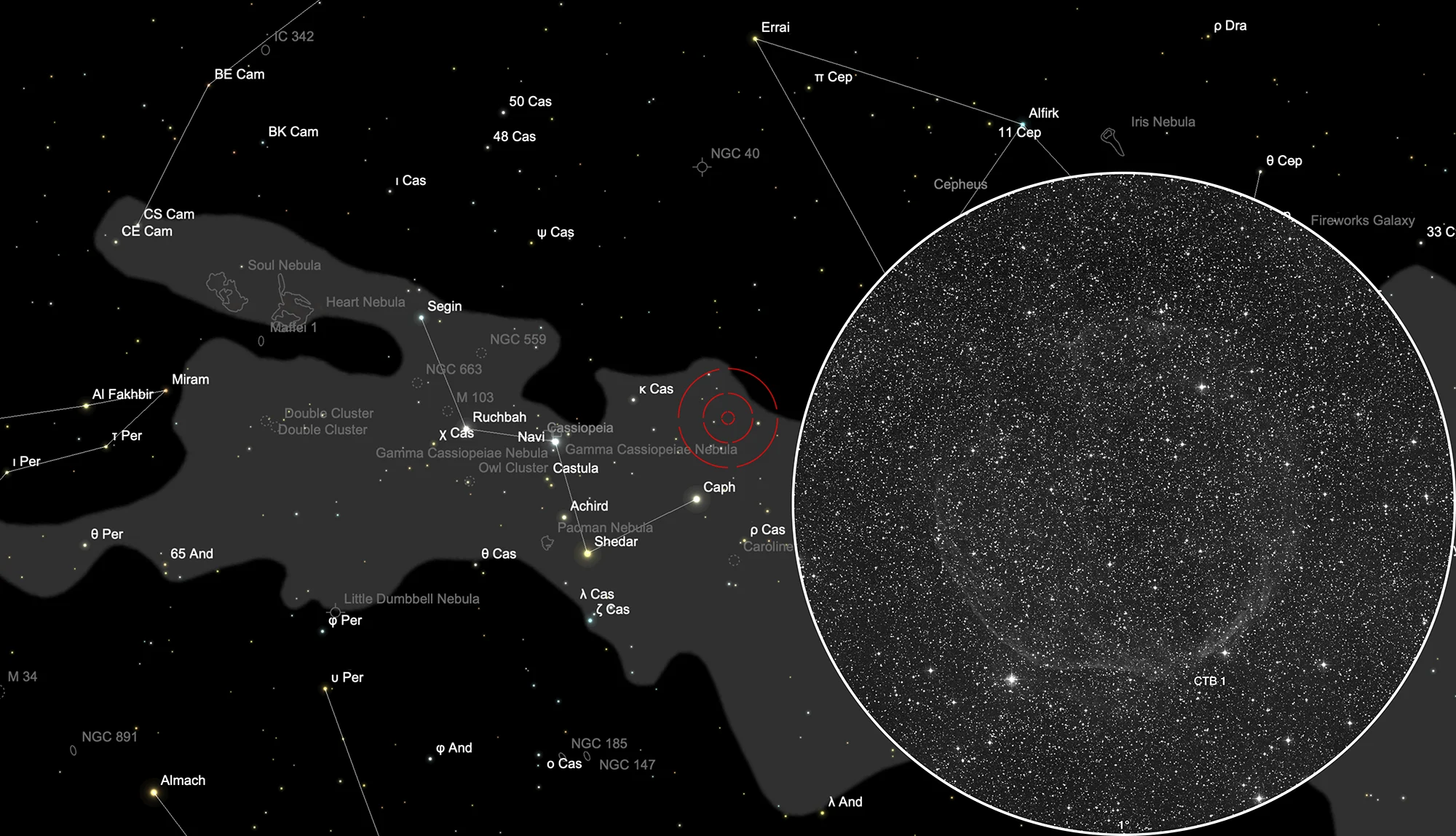Medulla Nebula (CTB 1, Abell 85)


History
In 1955 the American astronomer George Ogden Abell discovered during a survey of the «Palomar Observatory Sky Survey» (POSS) a large arc-like nebula with low surface brightness that he first thought was an old planetary nebula. He listed it in his 1955 publication as number 72. [331]
R. W. Wilson and J. G Bolten of the California Institute of Technology Radio Observatory did a survey of galactic radiation in 1959. They scanned the sky at a frequency of 960 Mc/s with an antenna of 0.8° beam width over a range of 300° in galactic longitude and found 110 discrete radio sources. Some of them could not be identified visually with objects on the POSS plates, so also the entry listed as number 1 (CTB 1, CTB = Caltech Observation List B), which had a diameter of about 1°. [597]
In 1965 the American astronomer Beverly T. Lynds published her catalog of bright nebulae. The nebula is listed there as H-II region LBN 116.81+00.03 (LBN 576). [270]
In Abells second publication of his survey of old planetary nebulae in 1966 he listed the nebula with the number 85 and a diameter of 2077 x 2077 arcseconds. He described it as a not symmetrical ring with bright spots or regions. He also noted: «The centre of the extended radio source CTB-1 [...] is 0.4° east of the nebula; it may be a supernova remnant.» [332]
In 1968 CTB 1 was then confirmed to be a supernova remnant by A. Poveda and L. Woltjer. [598]
On very long exposure images, the nebula appears as a gas bubble, which resembles a cross section through a human brain with spinal cord extension (medulla oblongata), which is why CTB 1 got the nickname «Medulla Nebula» among amateur astronomers.

Physical Properties
CTB 1 is the remnant of a supernova, the death of a massive star whose core collapses after its nuclear fuel is consumed. The radio pulsar PSR J0002+6216 has been identified to be born from the same supernova. The pulsar lies at the apex of a narrowly collimated cometary-like 7 arcminutes long tail of nonthermal radio emission, which was identified as a bow-shock pulsar wind nebula. The tail of the nebula points back toward the geometric centre of the supernova remnant CTB 1. At a distance of 2 kpc the pulsar shows a large transverse velocity of 1100 km/s. An asymmetric supernova explosion could be the cause for this pulsar natal kick velocity. The age of the supernova is estimated to 10'000 years. [599]
Finder Chart
The supernova remnant CTB 1 is located in the constellation Cassiopeia and is circumpolar for Central Europe. The provided J2000.0 coordinates are located in the centre of the gas bubble, which slowly becomes visible in images only after several hours of integration time. Circa 2.5° to the north lies the H-II region Sh 2-170. On 23 September it is in opposition to the Sun and crosses the meridian at local midnight. The best time to observe is May to February, when the constellation is highest at night.
Visual Observation
400 mm Aperture: In the star-rich part of the Milky Way, the position is easily verifiable based on the brighter stars. Neither without nor with an O-III filter is a nebula discernible. — 400 mm f/4.5 Taurus Dobsonian, Hasliberg, 16. 12. 2023, SQM 21.2, Bernd Nies
